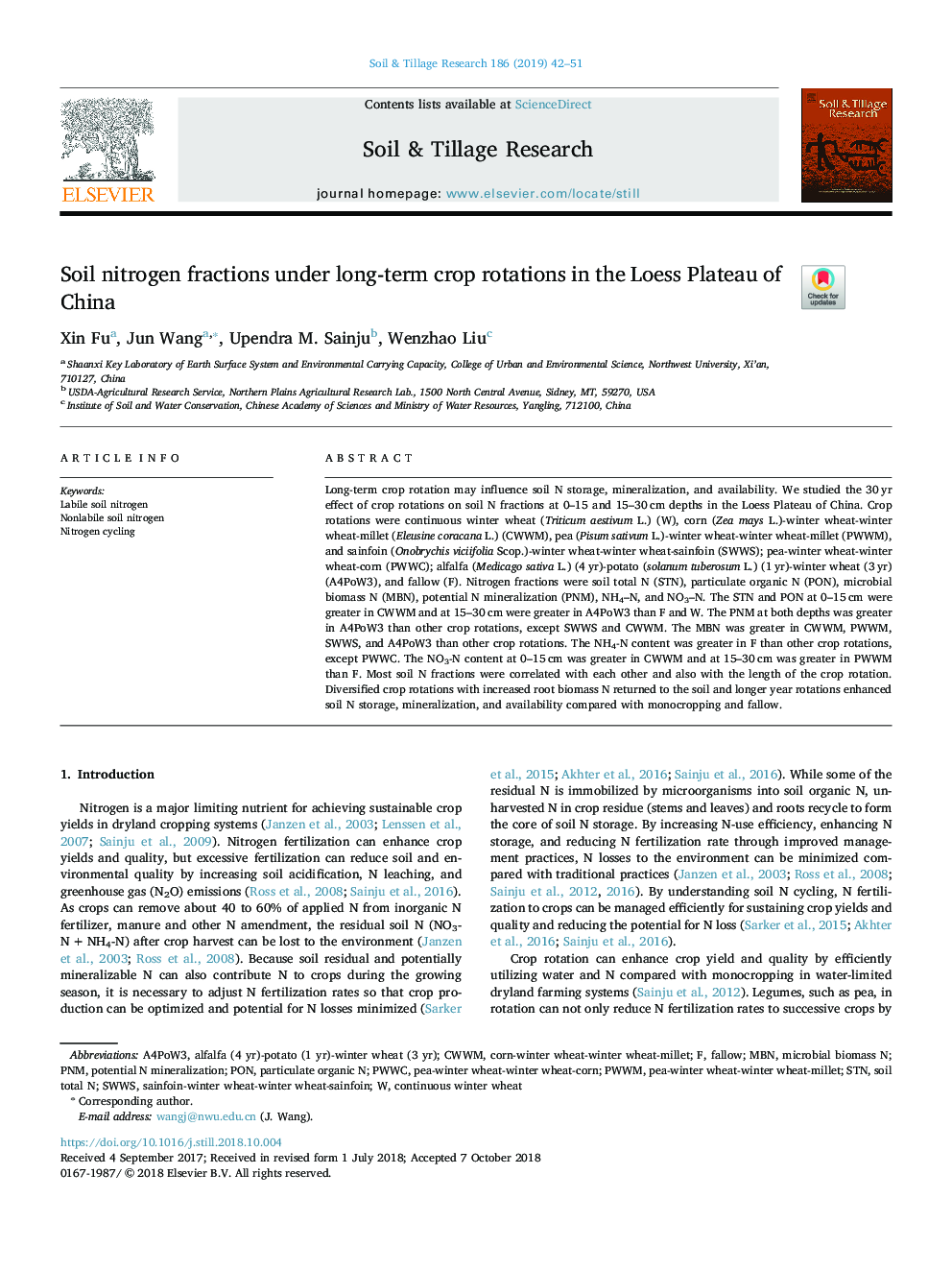| Article ID | Journal | Published Year | Pages | File Type |
|---|---|---|---|---|
| 11263159 | Soil and Tillage Research | 2019 | 10 Pages |
Abstract
Long-term crop rotation may influence soil N storage, mineralization, and availability. We studied the 30âyr effect of crop rotations on soil N fractions at 0-15 and 15-30âcm depths in the Loess Plateau of China. Crop rotations were continuous winter wheat (Triticum aestivum L.) (W), corn (Zea mays L.)-winter wheat-winter wheat-millet (Eleusine coracana L.) (CWWM), pea (Pisum sativum L.)-winter wheat-winter wheat-millet (PWWM), and sainfoin (Onobrychis viciifolia Scop.)-winter wheat-winter wheat-sainfoin (SWWS); pea-winter wheat-winter wheat-corn (PWWC); alfalfa (Medicago sativa L.) (4âyr)-potato (solanum tuberosum L.) (1âyr)-winter wheat (3âyr) (A4PoW3), and fallow (F). Nitrogen fractions were soil total N (STN), particulate organic N (PON), microbial biomass N (MBN), potential N mineralization (PNM), NH4-N, and NO3-N. The STN and PON at 0-15âcm were greater in CWWM and at 15-30âcm were greater in A4PoW3 than F and W. The PNM at both depths was greater in A4PoW3 than other crop rotations, except SWWS and CWWM. The MBN was greater in CWWM, PWWM, SWWS, and A4PoW3 than other crop rotations. The NH4-N content was greater in F than other crop rotations, except PWWC. The NO3-N content at 0-15âcm was greater in CWWM and at 15-30âcm was greater in PWWM than F. Most soil N fractions were correlated with each other and also with the length of the crop rotation. Diversified crop rotations with increased root biomass N returned to the soil and longer year rotations enhanced soil N storage, mineralization, and availability compared with monocropping and fallow.
Related Topics
Physical Sciences and Engineering
Energy
Renewable Energy, Sustainability and the Environment
Authors
Xin Fu, Jun Wang, Upendra M. Sainju, Wenzhao Liu,
